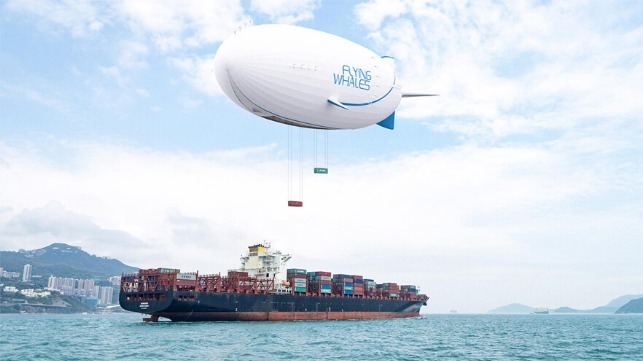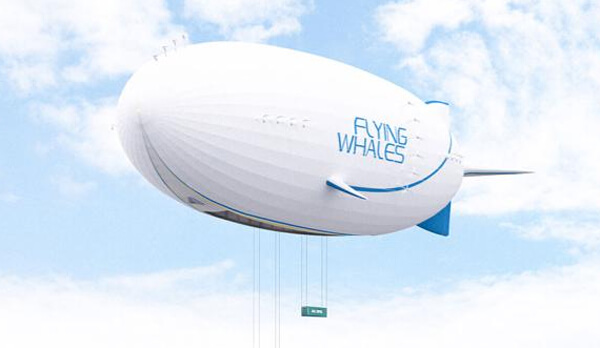Up Up and Away: Airships Used to Fly Large Cargo from Ships to Remote Areas

French logistics and freight forwarder Louis Dreyfus Armateurs (LDA) has a novel idea on how to move large cargo for shippers … they plan to fly it to and from the ship using airships not unlike the “blimps” and “dirigibles” of long ago. They announced a new partnership with a French company, Flying Whales, that was started a decade ago to develop and industrialize a large capacity airship.
“The LCA60T is an innovative transport solution that can operate in remote areas where roads are not available, thanks to its hovering capabilities,” writes LDA announcing the new ‘airship solution’ that is being created through the partnership. “It is also a very interesting solution for oversized cargoes, that are particularly difficult to transport via common roads or railways.”
Developed by Flying Whales, the LCA60T airship has a payload capacity of 60 tons. The airship measures 656 feet in length and has a diameter of 164 feet. By comparison, the ill-fated German dirigible Hindenburg, which claimed the title of the world’s largest when it was built by the Zepplin Company in 1936, had an overall length of 804 feet.
The large size of the airship gives it a cargo capacity which was first conceived as a means of moving timber from remote areas of Canada. The ability to reach remote areas remains one of the strongest advantages the airship can offer.
“By combining our expertise, we want to offer an innovative solution capable of solving particular issues that oversize cargoes face on the first and last miles of their voyage,” said Edouard Louis-Dreyfus, President of Louis Dreyfus Armateurs.

The massive LCA60T has a carry capacity of 60 tons (Flying Whales)
The LCA60T has a massive cargo bay measuring 315 feet in length. It has a height of 26 feet and a width of 23 feet. As an alternative to placing cargo in the bay, it is also possible to carry larger cargo using what they call the “under slings” mode where the cargo is suspended below the airship.
Lift for the massive craft is provided by a total of 14 unpressurized helium cells according to Flying Whales’ materials. It would have a total capacity of 180,000 cubic meters of helium, which the company also points out means it reduces energy consumption.
Flying Whales has also developed an all-electric propulsion system which they report will operate either using fuel cells with green hydrogen or by injecting helium into the turbines. There would be up to 32 electric thrusters distributed over seven propulsion points to ensure the LCA60T's maneuverability during cruise and loading phases. The company writes in its materials that the e-propeller, is a system on the LCA60T that converts the electrical power generated on board into thrust. It comprises a composite nacelle housing an electric motor capable of delivering over 200 kW of continuous power and the motor is driven by an exceptionally light AC/DC converter. A gearbox is integrated to adapt the rotational speed, driving a 4-meter-diameter 3-blade propeller with variable pitch.

that matters most
Get the latest maritime news delivered to your inbox daily.
LDA highlights that another advantage of the airship is that it does not require heavy transport infrastructure on the ground during operation.
The announcement did not provide any time for when cargo might be heading to the skies for delivery.
